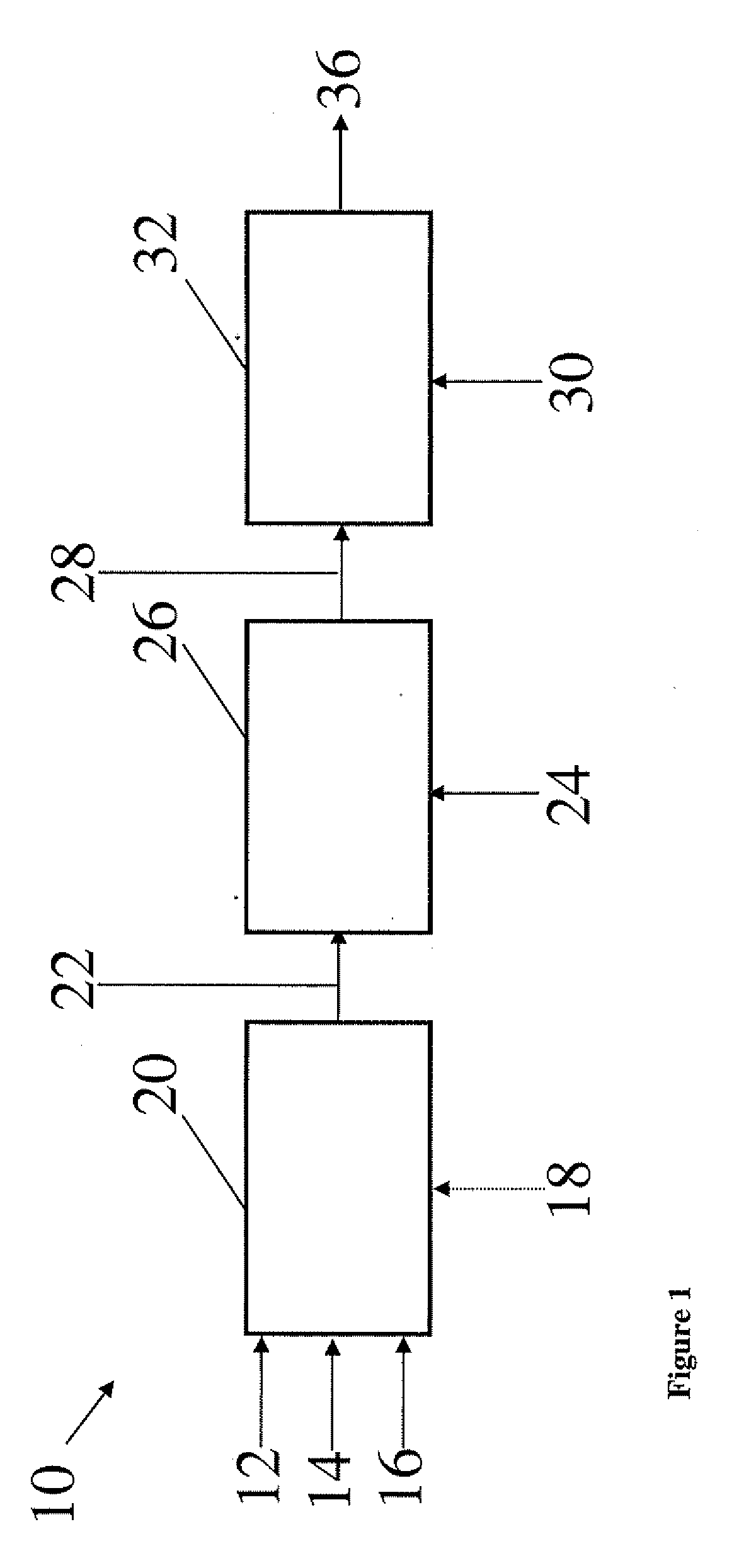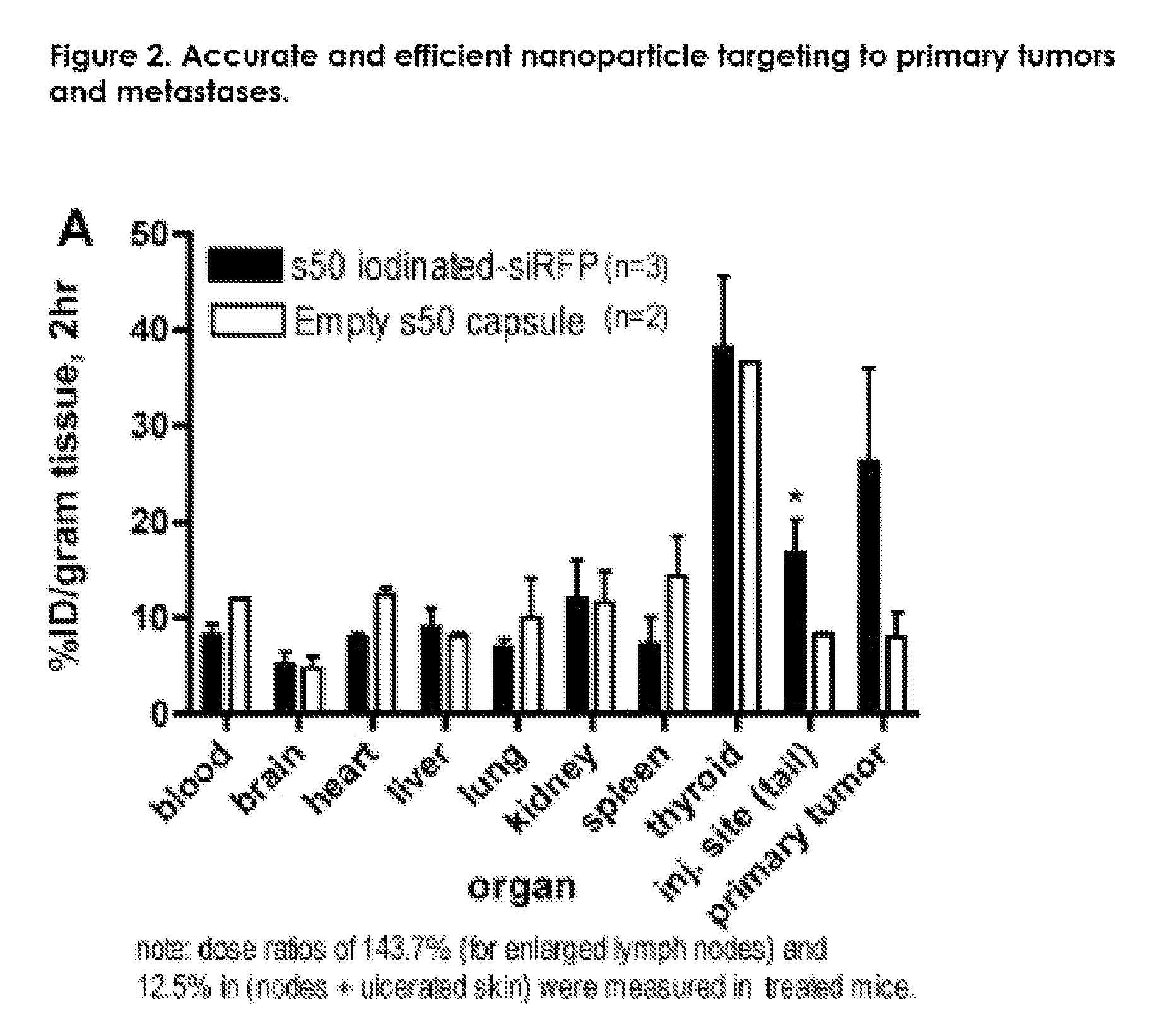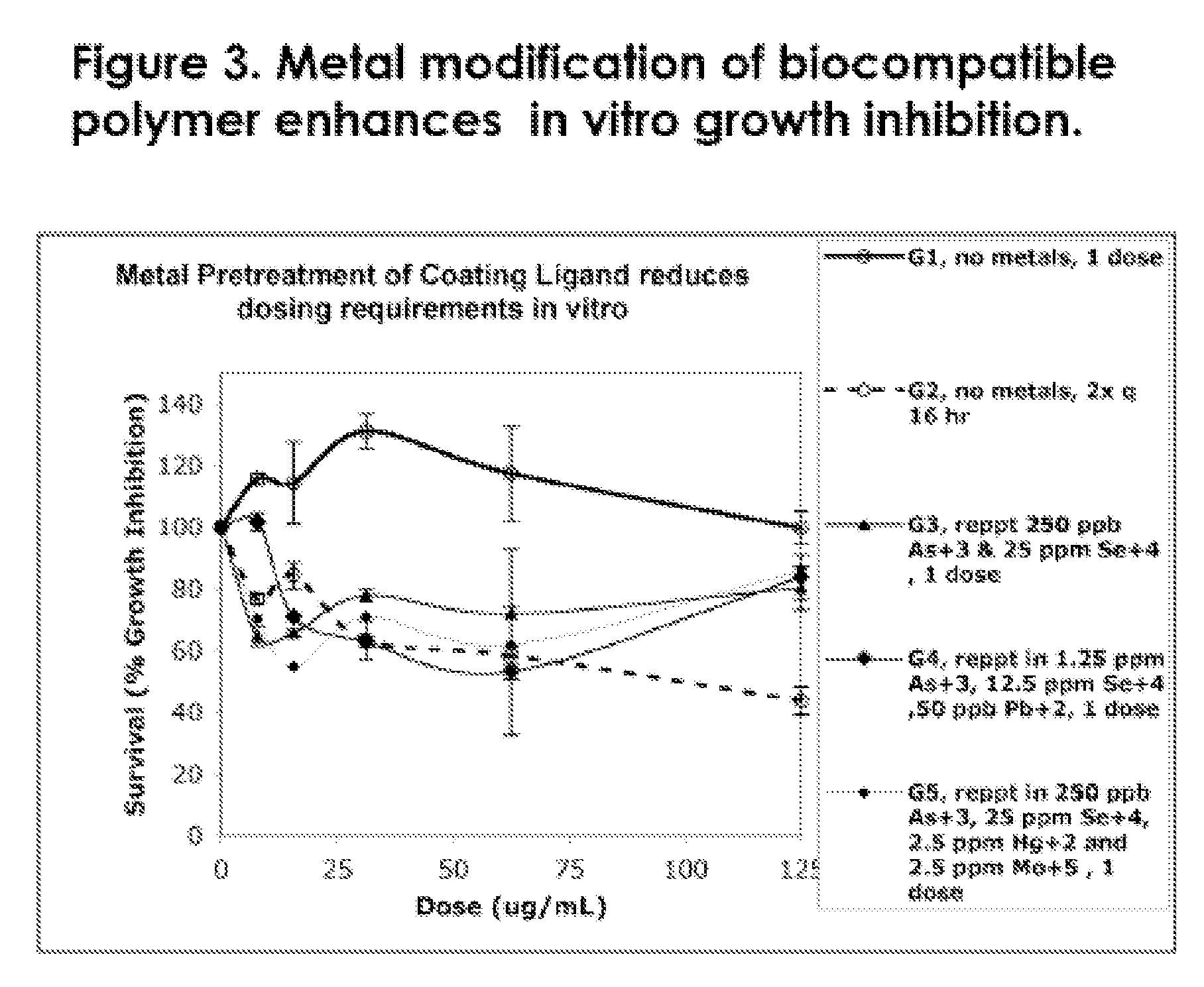Metal Ion-Treated Biocompatible Polymers Useful for Nanoparticles
a biocompatible polymer and metal ion technology, applied in the direction of microcapsules, peptides, drug compositions, etc., can solve the problems that the benefits of these delivery strategies cannot be expected to overcome in most cases the therapeutic challenges, and cannot translate into equivalent benefits for cancer patients, so as to improve the antiproliferative effect of drug-carrying nanocapsules and improve the treatment of hyperproliferative diseases
- Summary
- Abstract
- Description
- Claims
- Application Information
AI Technical Summary
Benefits of technology
Problems solved by technology
Method used
Image
Examples
example 1
Preparation of Tumor-Targeted Nanoparticles
[0110]This example describes how colloidal formulations of diverse cargos and biocompatible polymers may be generated. Nanoparticles for uptake, biodistribution and efficacy studies were prepared by the “dispersion atomization” method described in U.S. Pat. No. 6,632,671, which is incorporated herein by reference in its entirety, with some modifications.
[0111]Tenascin (“TN”) is an extracellular matrix molecule that is useful for nanoparticles as a biocompatible polymer and / or as a targeting moiety. Tenascin is a branched, 225 KD fibronectin-like (FN) extracellular protein prominent in specialized embryonic tissues, wound healing and tumors. The appearance of tenascin-C surrounding oral squamous cell carcinomas appears to be a universal feature of these tumors, while tenascin-rich stroma has been consistently observed adjacent to basal cell, esophageal, gastric, hepatic, colonic, glial and pancreatic tumor nests. Production of TN by breast c...
example 2
Targeting of Primary and Metastatic Tumor Burden with Specific, Tumor-Targeted Nanoparticles in Human Xenograft Tumors
[0125]The specificity of site-directed targeting of nanoparticles for intracellular uptake to tumors and micrometastatases was investigated by treating mice bearing SSCHN (squamous cell carcinoma of the head and neck, FaDu) xenograft tumors with TBG nanoparticles containing iodine-derivatized siRNA against Red Fluororescent Protein (RFP, Example 1 Formula A).
[0126]TBG is useful as a cell recognition component in a tumor-targeting nanoparticle as is Tenascin-C, from which it is derived. Besides being consistently observed in stroma adjacent to many solid tumors, Tenascin has also been linked to the vascularization of tumor tissue; specifically, tenascin (i) has been found in and around tumor microvessels, (ii) is produced by migrating endothelial cells, and (iii) when coated on tissue culture plates, stimulates sprouting by and migration of endothelial cell. Antibodie...
example 3
Targeted S50 Nanoparticle Increases Cellular Exposure for Hydrophobic Small Molecules
[0130]To investigate whether sub-50 nm colloidal delivery could significantly enhance delivery of challenging pharmaceuticals, we undertook formulation of a poorly, water-soluble small molecule inhibitor of CK2, DMAT for in vitro studies (prepared as in Example 1, Formula B). An initial comparison of free to formulated DMAT was carried out by comparing 48 hour survival of androgen-resistant PC-3 prostate carcinoma cells plated on 3-D synthetic matrices in 96 wells (Corning Ultramax) to promote caveolar development at cell surfaces. s50 ligand-directed nanoparticles are believed to more efficiently enter cells through non-clathrin-mediated processes such as caveolae, thus avoiding lysosomal sequestration common to other forms of delivery. Cells received a series of single doses and survival was assayed by thymidine incorporation by pulsing in 1 uCurie per 96 well. The results showed that tumor-target...
PUM
| Property | Measurement | Unit |
|---|---|---|
| diameter | aaaaa | aaaaa |
| size | aaaaa | aaaaa |
| diameter | aaaaa | aaaaa |
Abstract
Description
Claims
Application Information
 Login to View More
Login to View More - R&D
- Intellectual Property
- Life Sciences
- Materials
- Tech Scout
- Unparalleled Data Quality
- Higher Quality Content
- 60% Fewer Hallucinations
Browse by: Latest US Patents, China's latest patents, Technical Efficacy Thesaurus, Application Domain, Technology Topic, Popular Technical Reports.
© 2025 PatSnap. All rights reserved.Legal|Privacy policy|Modern Slavery Act Transparency Statement|Sitemap|About US| Contact US: help@patsnap.com



